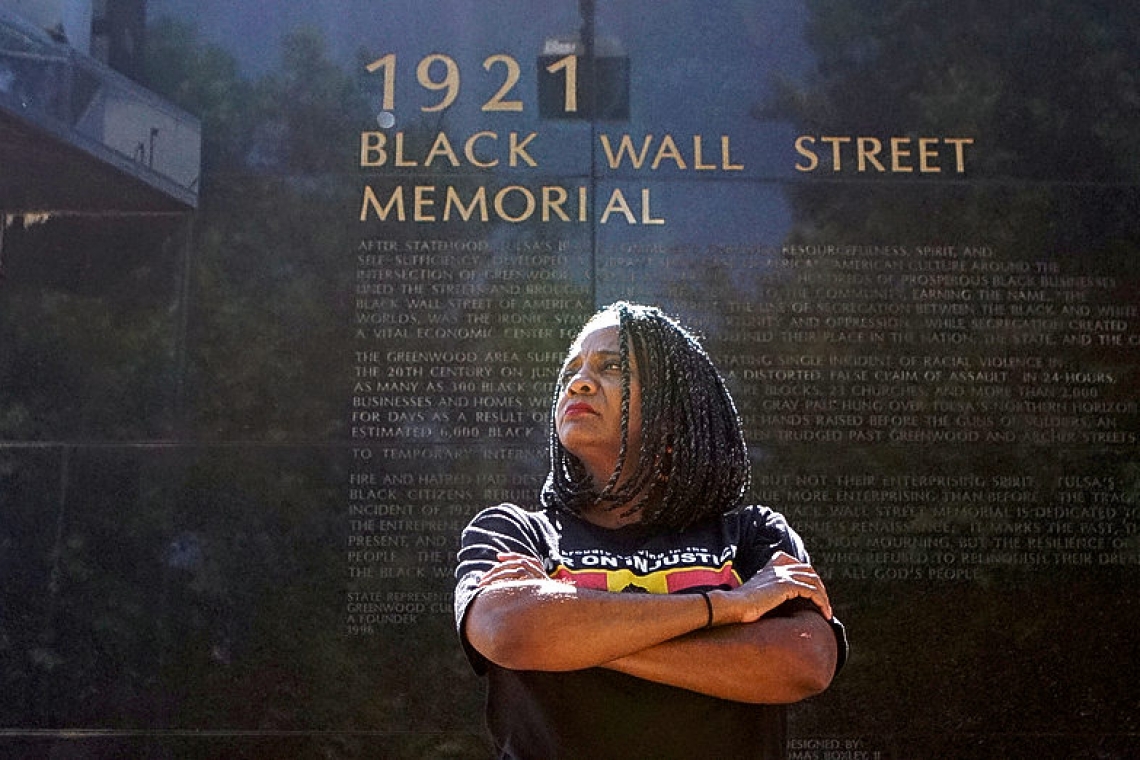TULSA, Oklahoma--Thirteen jars filled with ash and dirt and bone rest in the basement of Tulsa's Vernon African Methodist Episcopal Church, an unsettled repose for the victims of a nearly century-old massacre that still haunts the Black residents of Oklahoma's second-largest city.
There are no graves for Eliza Talbot, Ed Adams or 11 others. Their bodies were lost, along with hundreds, when a white mob killed and burned its way through the city's Greenwood neighbourhood in 1921, at the time one of the largest and wealthiest Black communities in the United States.
To the dismay of community leaders and residents, and just weeks after a May 31 vigil to mark the massacre's 99th anniversary, President Donald Trump plans his first campaign rally since March mere blocks away from Greenwood on Saturday. The rally will occur a day after Juneteenth, which commemorates when a Union general went to Texas in 1865 and announced the Emancipation Proclamation had freed enslaved people, more than two years after it was issued in 1863.
"Trump's presence will cast a huge shadow over these events," said Rev. Robert Turner of the Vernon A.M.E. church, which was rebuilt after it was burned down during the 1921 attack. "The president is supported by racists, by neo-Confederates. I fear this rally will attract all those people to our city."
Trump, who has said his supporters "love Black people," moved the rally to June 20 from its original Juneteenth date, tweeting that the change was "out of respect for ... this important occasion and all that it represents."
The rally also coincides with protests against police brutality and racism across the United States and globally, after the May killing of George Floyd by a white police officer who knelt on his neck for nearly nine minutes. Floyd's death has added to the disquiet among Black residents in Tulsa, which saw its own demonstrations in 2017 after a white police officer was acquitted of manslaughter for shooting a Black man during a routine traffic stop.
"I do look at Trump's visit as a slap in the face, a form of disrespect," said Rev. Mareo Johnson, who runs the Tulsa Black Lives Matter (BLM) chapter.
In Greenwood, which was cut in half by a highway in the late 1960s, Black residents say they still struggle with the massacre’s enduring scars. The district's main thoroughfare, Greenwood Avenue, once boasted the largest Black-owned hotel in the United States as well as Black-owned banks, medical practices, law offices and libraries.
It is now lined with a handful of small retail shops and a restaurant, and abuts a minor league baseball team's field. Tulsa's north side, home to most of its African-American residents, has no traditional grocery stores or much retail shopping, further isolating the residents.
"Greenwood today is confined like a holding zone," said Cleo Harris Jr. who owns Black Wall Street T-shirts and Souvenirs shop on Greenwood Avenue. "The dividing of Greenwood by this highway was white America's way to contain us. Black people are still considered less than."
Greenwood's concentration of wealth in the early 20th century led to the area becoming known as "Black Wall Street". African-Americans made up roughly 12% of Tulsa’s 72,000 population in 1920, as Greenwood’s success and the Oklahoma oil boom attracted other Black Americans.
"Greenwood used to be the mecca of Black opportunity and Black economy. This is sacred ground," said community activist Kristi Williams, whose great aunt survived the massacre. "This was the place to be for newly-free Africans to re-establish themselves. There are bones in the land that keep us connected to this place."
The massacre began after a local Black youth was arrested for allegedly assaulting a white girl. The allegations were never proven.
White rioters tore through Greenwood, destroying 23 churches, more than 2,000 Black-owned businesses and homes, and 36 square blocks of the neighbourhood, according to the Greenwood Cultural Center. About 300 people died and more than 6,000 survivors and Black Tulsa residents were sent to internment camps and held, according to a Human Rights Watch report in May that called for reparations.
For decades it was not clear where many bodies were buried, but recent archeological work points to a mass grave near the Arkansas River. Dig work at the site was halted this spring due to the coronavirus pandemic.
Tulsa never paid restitution to the victims and insurance companies refused to pay out, citing riot clauses in contracts. No one was charged in the murders. While survivors returned to Greenwood, it never regained its former status.
Some Black Tulsans are hoping to use Trump’s visit to spotlight racial inequity and push for reparations for victims of the 1921 disaster, either through money, scholarships to local colleges or returning land taken from victims.
"I want to channel all this pain and anger into change for our community," said activist Williams.







